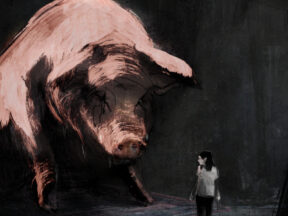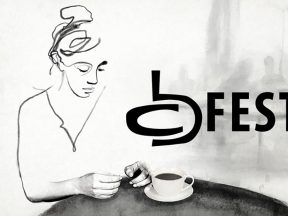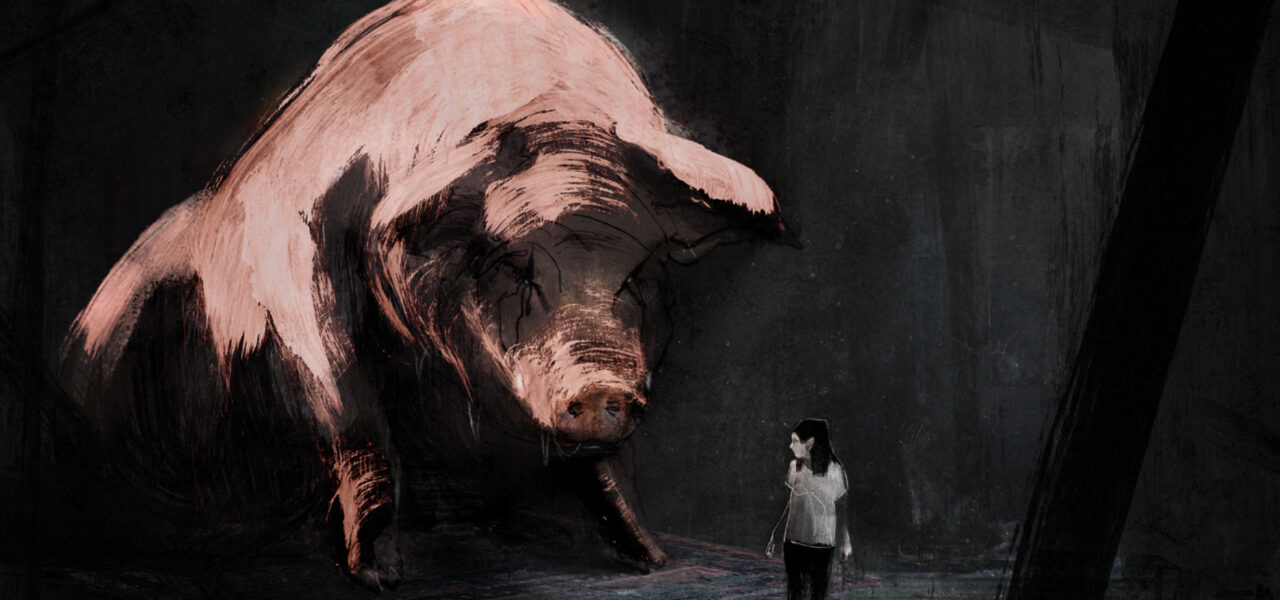
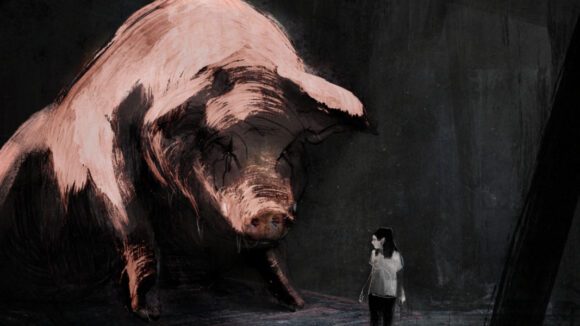
2024 Oscars Short Film Contenders: ‘Letter To A Pig’ Director Tal Kantor
Welcome to Cartoon Brew’s series of spotlights focusing on the animated shorts that have qualified for the 2024 Oscars. There are several ways a film can earn eligibility. With these profiles, we’ll be focusing on films that have done so by winning an Oscar-qualifying award at an Oscar-qualifying festival.
Today’s short is Letter to a Pig from Tal Kantor (In Other Words). The film earned its Oscar qualification by winning the best international short film award at the Anima – Brussels Animation Film Festival.
Letter to a Pig blends animation techniques and live-action shots to tell different versions of the same story. In the short, a Holocaust survivor reads a letter he wrote to a pig that saved his life to a group of schoolchildren. Different styles emphasize how human memory is fallible and how recalled images and imagination are often abstract.
Cartoon Brew: Last time we talked, you told us that with this film, you continued to develop techniques you had used on your previous short In Other Words. Can you describe those techniques and explain why they were appropriate for this film?
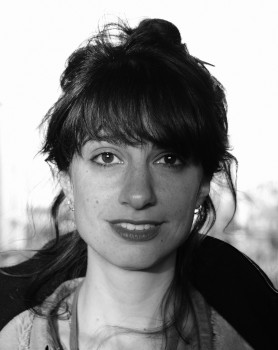
Tal Kantor: This is a mixed media technique I’ve developed that combines hand-drawn animation with footage segments. In this film, I added another significant layer to the process, using traditional paint animation on paper. I think the materiality of paint on paper has a lot of expression and emotion, and it was important to me that these be part of this film. Since the film deals with memory and the subconscious, this technique allows me to imitate how our mind and memory work. In our memory, certain details are kept in a clear and detailed way, while other elements can fade and disappear over time. That is why the visual language and the characters in the film appear fragmented and incomplete, to give a dynamic feeling of the characters’ point of view. This way, I could play with the reality that often appears in the detailed footage and combine it with the elusiveness of memory and imagination with the free animated lines and color stains.
What was it about this story or concept that connected with you and compelled you to direct the film?
Although making this film took almost five years, its journey began over 17 years ago. Letter to a Pig is based on my experience as a schoolgirl, an encounter with a holocaust survivor who shared his story in my class on Memorial Day, and an unforgettable dream I had afterward. The story and the dream were so powerful that they stayed with me a decade later. Whenever I thought about it, It evoked deep questions about my identity and the complex baggage I and a young generation subconsciously carry. This experience and those questions stayed with me all those years and eventually became an urge to create this film. I wanted to share these thoughts on the screen and ask, among other things: Can we learn and talk about past traumas without transmitting them to future generations?
What did you learn through the experience of making this film, either production-wise, filmmaking-wise, creatively, or about the subject matter?
I learned many things professionally and personally during this film’s creative journey. I think the most significant thing I learned is the value of working with a great team, which I was fortunate enough to do on this film. It was such a complex and unique production that I could not have done it like this without the dedicated team that gathered from different parts of the world for its creation and who gave their full talent and creativity so that every layer of the process and vision would be fulfilled in the best way possible. It was difficult but also one of the most significant and special processes I have gone through so far in my life.
Can you describe how you developed your visual approach to the film? Why did you use this style/technique?
The story of this film has many layers and complexity, so in the visual development, I played a lot with collage and the connection of different mediums that can convey this complexity in subtle or expressive ways. I wanted the film to echo a broken and wounded language of memory and emotions. This collage, which combines hand-drawn lines, dry expressive color stains, footage, and archives, felt like the appropriate visual language for the theme of this film. To give life and movement to the different bits and pieces of stories, emotions, and images we construct into a collective memory. This technique also allowed me to express the inner emotional world of the characters in their visual appearance. It let me express how they feel through a single delicate line or a vibrating color stain, when they feel affection, when they feel rage, or when they feel like they want to disappear or that no one is listening.
This interview was edited for length and clarity.

.png)
